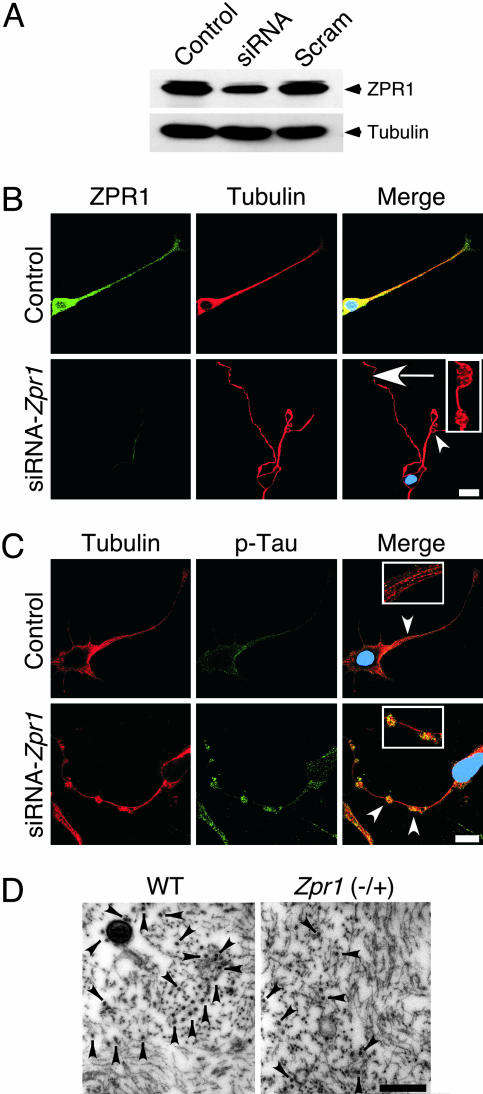Fig. 5.
Loss of microtubules and axon degeneration caused by ZPR1 deficiency. (A) Differentiated NSC-34 cells were transfected with mock (Control), control RNA duplex Scramble II (Scram), and Zpr1 siRNA (siRNA). Levels of expression of ZPR1 and tubulin proteins (72 h after transfection) were examined by immunoblot analysis using antibodies to ZPR1 and tubulin. (B) Zpr1 gene suppression causes axonal defects in differentiated NSC-34 cells that resemble motor neurons. Cells transfected with scrambled siRNA (Control) and ZPR1 specific siRNA (siRNA-Zpr1) were cultured for 72 h and stained with antibodies to Tubulin (red) and ZPR1 (green). Arrowhead indicates axon retraction after Zpr1 gene suppression. Arrow indicates axonal swelling and microtubule disruption (see Inset). (Scale bar, 20 μm.) (C) ZPR1 deficiency causes microtubule disruption in differentiated NSC-34 cells. Cells were stained with antibodies to Tubulin (red) and phospho(Ser-262)-Tau (green). Arrowheads indicate normal microtubules in control cells (see Upper Inset) and accumulated phospho-Tau at the sites of microtuble disruption (see Lower Inset). (Scale bar, 20 μm.) (D) ZPR1 deficiency causes loss of microtubules in axons of peripheral nerves. Transverse ultrathin sections of the femoral nerve of 12-month-old WT and Zpr1+/− littermates were examined by transmission electron microscopy. Neurofilaments and microtubules were detected in the axoplasm. Arrowheads indicate microtubules. (Scale bar, 1 μm.)

